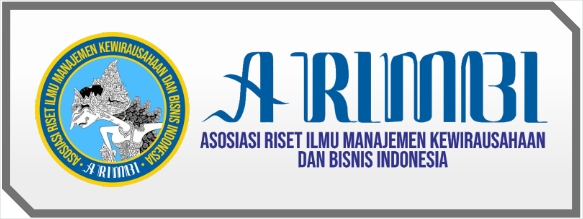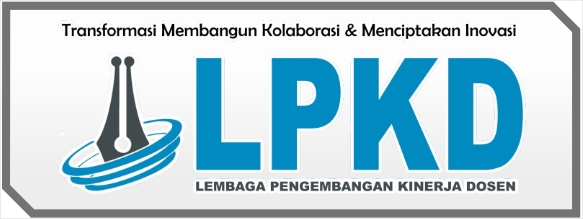Marketing Performance of “Pelanusa” Patchwork Products in This Era 5.0
DOI:
https://doi.org/10.55606/iceb.v1i2.114Keywords:
Digital Platform, e-Commerce Marketing Capabilities, Marketing Innovation Capabilities, Marketing PerformanceAbstract
Pelanusa Group, a group of patchwork craftswomen based on social entrepreneurship, has been facing a drastic decline in market performance for its creative products since the occurrence of disruptive technology accelerated by the Covid-19 outbreak. The purpose of this study is to determine the role of digital platforms and e-commerce marketing capabilities in building marketing innovation capabilities that have an impact on marketing performance. A total of 160 Pelanusa patchwork craftsmen have been selected as respondents using purposive sampling technique. The data collected through the questionnaire was analyzed with SmartPLS 4.0.7.8 Software. The results of the study show that there is a very important role in the use of digital platforms and mastery of e-commerce marketing because these two things will be able to break the ability of innovation in marketing. Strong marketing innovation will have an impact on marketing performance as indicated by expanding market share and increasing customer satisfaction as well as total sales. It is recommended that further research be able to reveal digital marketing strategies that can be applied by craftswomen and people with disabilities so that they can remain productive at work and have income from selling their products.
References
S. I. Wien, (2016), “Pelanusa, Kembangkan Bisnis dengan Sosial Eunterpreuner,” www.timesindonesia.co.id, Malang, Jawa Timur, Indonesia.
A. S. Dwianto, (2018), “Social Entrepreneur Ship: Inovasi Dan Tantangannya Di Era Persaingan Bebas,” Maj. Ilm. Bijak, vol. 15, no. 1, pp. 68–76.
S. I. Wien, (2016), “Pelanusa Latih Ibu Rumah Tangga Geluti Industri Kreatif,” www.timesindonesia.co.id, Malang, Jawa Timur, Indonesia.
T. S. Sadewo, (2019), “Percacita, Proyek Sosial yang Memberdayakan Penyandang Disabilitas Meraih Cita,” www.kompasiana.com, Malang, Jawa Timur, Indonesia.
N. Zeitalini, (2021), “Ubah Limbah Jadi Berkah, Kain Perca Pelanusa Kini Tembus Pasar Global,” finance.detik.com.
A. A. Agus, G. Yudoko, N. Mulyono, and T. Imaniya, (2021), “E-Commerce Performance, Digital Marketing Capability and Supply Chain Capability within E-Commerce Platform: Longitudinal Study Before and After COVID-19,” Int. J. Technol., vol. 12, no. 2, pp. 360–370.
S. Ngamsutti and P. Ussahawanitchakit, (2016), “Marketing Innovation Capability and Marketing Performance: An Empirical Study of Electrical and Electronic Appliances in Thailand,” Bus. Manag. Rev., vol. 7, no. 5, pp. 339–346.
A. Khattak, (2022), “Hegemony of Digital Platforms, Innovation Culture, and E-Commerce Marketing Capabilities: The Innovation Performance Perspective,” Sustain., vol. 14, no. 1, pp. 1–13.
M. A. Yosep, M. Mohamed, M. Y. Yusliza, J. Saputra, Z. Muhammad, and A. T. Bon, (2021), “Does digital marketing platforms affect business performance? A mini-review approach,” Proc. Int. Conf. Ind. Eng. Oper. Manag., pp. 4372–4386.
R. Ruggieri, M. Savastano, A. Scalingi, D. Bala, and F. D’Ascenzo, (2018), “The impact of Digital Platforms on Business Models: An empirical investigation on innovative start-ups,” Manag. Mark., vol. 13, no. 4, pp. 1210–1225.
Z. Zhu, (2022), “The Influence of Digital Technology in the Digital Marketing,” Proc. 2021 3rd Int. Conf. Econ. Manag. Cult. Ind. (ICEMCI 2021), vol. 203, no. Icemci, pp. 1514–1519.
A. A. Agus, G. Yudoko, N. B. Mulyono, and T. Imaniya, (2020), “E-commerce Platform Performance, Digital Marketing and Supply Chain Capabilities,” Int. Res. J. Bus. Stud., vol. 13, no. 1, pp. 63–80.
D. Tolstoy, E. R. Nordman, and U. Vu, (2022), “The indirect effect of online marketing capabilities on the international performance of e-commerce SMEs,” Int. Bus. Rev., vol. 31, no. 3, pp. 1–10.
V. B. Kumbara and M. Afuan, (2021), “The Impact Of Product Innovation And Market Orientation On The Competitive Advantage of Souvenirs In Padang,” J. Ekobistek, vol. 22, no. 2, pp. 21–28.
H. S. Utomo and S. Susanta, (2020), “The Effect of Digital Marketing Capability Against Marketing Performance with Innovation as mediation (Study on Batik SMEs during the Covid-19 Pandemic),” vol. 1, no. 1, pp. 166–173.
W. P. Rahayu, D. D. Kusumojanto, J. A. Martha, G. Ningsih, and N. T. Hapsari, (2021), “The Role of Digital Marketing, Innovation, Self-Efficacy in Business Sustainability At the Rengginang Industrial Centre in the New Normal,” vol. 24, no. 6, pp. 88–95.
T. Gillpatrick, (2019), “The Digital Transformation of Marketing: Impact on Marketing Practice & Markets,” Economics, vol. 7, no. 2, pp. 139–156.
J. J. F. Hair, M. Sarstedt, L. Hopkins, and V. G. Kuppelwiesier, (2014), “Partial Least Squares Structural Equation Modeling ( PLS-SEM ) An Emerging Tool in Business Research,” Eur. Bus. Rev., vol. 26, no. 2, pp. 106–121.
G. D. Garson, (2016), Partial Least Squares: Regression & Structural Equation Models, 2016 Edition. Asheboro, USA..
R. P. J. Rajapathirana and Y. Hui, (2018), “Relationship Between Innovation Capability, Innovation Type, and Firm Performance,” J. Innov. Knowl., vol. 3, no. 1, pp. 44–55.
M. Hair, J. F., Hult, G. T. M., Ringle, C. M., & Sarstedt, (2017), A Primer on Partial Least Squares Structural Equation Modeling (PLS-SEM). Thousand Oaks, Second Edi. Washington DC, USA
















